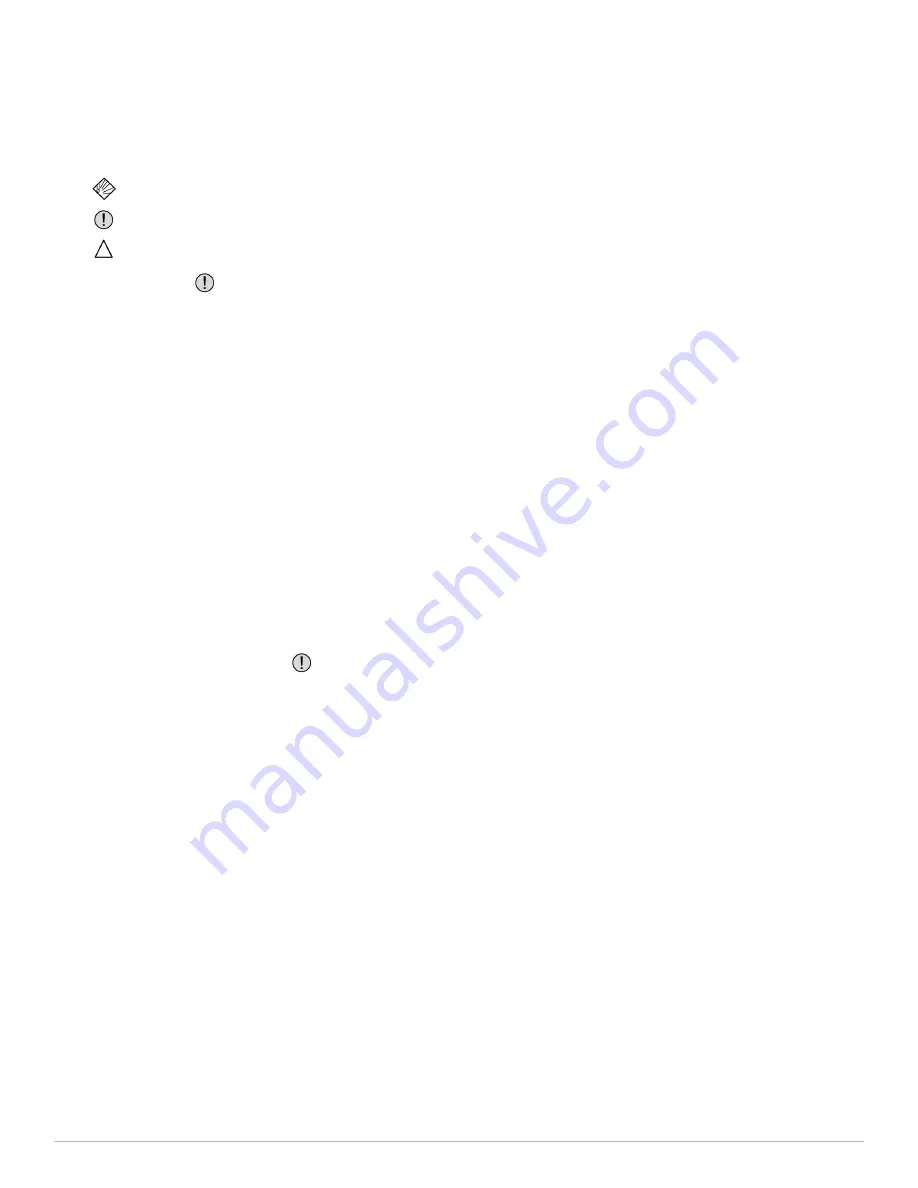
AODDAMPENER™
2
Temperature & Pressure Hazard
Temperature and pressure reduce the strength and chemical
resistance of plastic, metal, elastomers and PTFE.
Charging / Pressurization
Charge or pressurize dampener with clean compressed air only.
DO NOT USE OXYGEN.
Dampener Diaphragm Failure
AODDampener models utilize a PTFE diaphragm to separate
system fluid from the air supply. When failure occurs, system
fluid may be expelled from the air valve. Always perform
preventive maintenance and replace diaphragm before excessive
wear occurs.
Maintenance Hazards
Never overtighten fasteners. This may cause leakage of system
fluid and damage to dampener body. Bolts should not be
reused as re-torquing reduces bolt strength.
After dampener
maintenance or disassembly, use new fasteners and
torque fasteners according to specification on dampener
tag. If missing, consult distributor or factory for torque
specifications.
General Safety
DO NOT
misuse dampener, including but not limited to over-
pressurization, modification of parts, using incompatible
chemicals, or operating with worn or damaged parts.
DO NOT
use any gases other than compressed air to charge dampener.
DO NOT USE OXYGEN
. Any misuse could result in serious
bodily injury, death, fire, explosion or property damage.
Over-Pressurization
Never exceed the maximum pressure rating for the dampener
model being used. Maximum allowable working pressure
(MAWP) is specified on dampener serial tag or marked on
dampener. Maximum allowable working pressure (MAWP) is
rated at 70°F (21°C).
Temperature Limits
DO NOT
exceed the operating temperature limits for the body
and/or diaphragm materials being used. Excessive temperature
will result in dampener failure. For temperature limits, refer to the
“Temperature Limits” section of this Manual. Temperature limits
are stated at zero psi/bar.
Installation and Startup Hazards
Install dampener before charging or pressurizing.
DO NOT
start system or assembly without first charging or pressurizing
dampener. Failure to charge may result in damage to the PTFE
diaphragm.
CAUTION!
Equipment Misuse Hazard
▪
DO NOT
operate a dampener that is leaking, damaged,
corroded or otherwise unable to contain internal fluid, air or
gas pressure.
▪
DO NOT
pump incompatible fluids through dampener. Consult
distributor or factory if you are not sure of the compatibility of
system fluids with dampener materials.
▪ AODDampener models are designed to operate with
compressed air
only
. Other compressed gases have not been
tested and may be unsafe to use.
DO NOT USE OXYGEN.
▪ Always shut off air supply, remove internal dampener
pressure and shut dampener isolation valve before performing
dampener maintenance or repair.
▪ Remove all pressure from dampener AND pumping system
before disassembly, removal or maintenance.
▪
Static spark can cause an explosion resulting in severe
injury or death. Ground dampeners and pumping system
when pumping flammable fluids or operating in flammable
environments.
▪ Observe all safety symbols in installation and operation
instructions.
▪ The internal dampener pressure will equal the maximum fluid
pressure of the system in which it is installed.
▪
DO NOT
exceed maximum allowable working pressure
(MAWP) specified on dampener serial tag or marked on
dampener. If missing,
DO NOT
use dampener without
consulting distributor or factory for maximum pressure rating.
▪ Always make sure safety shutoff valves, regulators, pressure
relief valves, gauges, etc. are working properly before starting
system or assembly.
▪ Verify dampener model received against purchase order and
shipper.
▪ Before starting a system or assembly make certain the
discharge point of the piping system is clear and safe, and all
persons have been warned to stand clear.
▪
DO NOT
put your face or body near dampener when the
system or assembly is operating or dampener is pressurized.
CAUTION!
General Safety
NOTES
Special instructions for safe and satisfactory installation, operation and maintenance.
CAUTIONS
Equipment damage, injury or death could occur if these cautions are not observed.
WARNINGS
Danger of serious injury or death could occur if these warnings are ignored.
The following symbols indicate cautions, warnings and notes that must be observed for safe and satisfactory installation, operation and
maintenance of dampener.
Safety Symbols
Dampeners should only be installed, operated and repaired by experienced and trained professional mechanics. Read and observe all
instructions and safety warnings in this Manual before installing, operating or repairing dampeners.
SAFETY Warnings






























